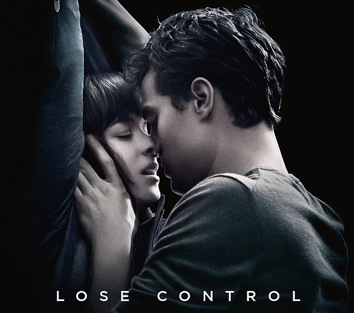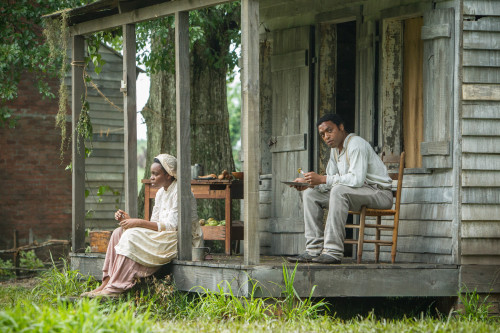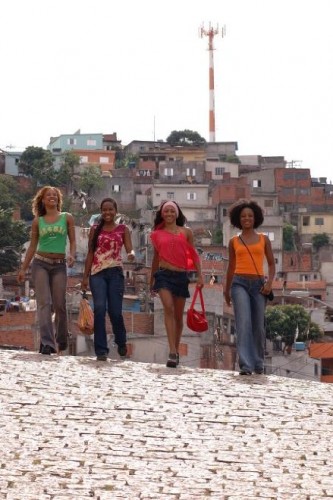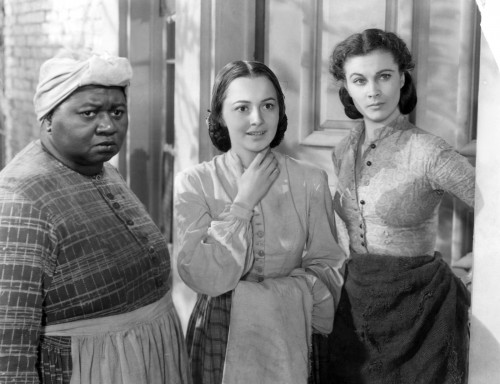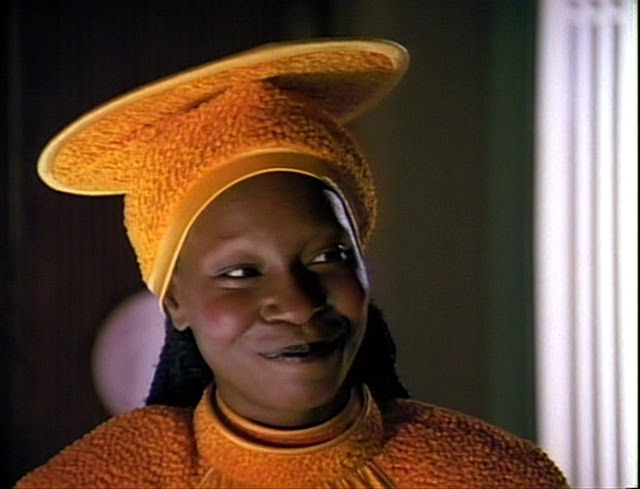Trigger Warning: Detailed discussion of rape apologism (and some explicit reference to Robin Thicke)
The Myth Of Male Power by Warren Farrell (PhD, of course) is arguably the intellectual foundation of Men’s Rights Activism (MRA). It is also notorious for its rape apologism, using female fondness for fictional rape fantasy to argue that men should not be prosecuted for date rape, as long as they are “trying to become her fantasy.” For the record, I don’t believe rape fantasies cause rape. In the real world, desire is not so easily misunderstood. What rape fantasy does feed, as Farrell illustrates, is rape apologism. Our cultural models of “romanticized rape” shape the excuses of rapists and encourage their general acceptance. We might respond by pointing out that women consent to rape fantasy automatically, just by imagining it, by turning the pages as they read or by opening their eyes to watch on-screen. Since rape fantasy is consensual, it has nothing in common with the violation of actual rape. But with the often coercive “romance” of Fifty Shades of Grey set to rule the box office, now is a good time to ask: what actually is the cinematic appeal of rape fantasy?
Gone With The Wind: Putting the “awww” in Sexual Assawwwlt
[youtube_sc url=”https://www.youtube.com/watch?v=PRxfZHr3AxY” title=”GWTW%20marital%20rape%20scene”]
Rhett Butler threatens to crush his wife’s skull, declares “this is one night you’re not turning me out” then carries her upstairs, visibly struggling. Cut to Scarlett awakening the next morning with smiling pleasure. Her husband threatened to kill her, declared his intention to rape her while she protested, yet she is shown waking up happy the following day. Like Fifty Shades of Grey, this is an adaptation of a female author’s book, cited as sexual fantasy by many female viewers. What’s going on?
Margaret Mitchell’s Gone With the Wind mirrors classic interpretations of Wuthering Heights‘ romance – like Linton, Ashley represents the heroine’s social aspirations, while Rhett mirrors Heathcliff as her primal, resisted passion. This must be understood within a wider tendency by female-authored texts to reject their primary object of desire, which I’ve previously examined for Jane Austen’s Unsuitable Suitor and the “Wolf” of SARCom. In response to such rejection, Twilight‘s Jacob Black forces a long kiss on heroine Bella Swann. Buffy‘s spurned “Wolves,” Spike and hyena-possessed Xander, both attempt to rape Buffy.
This rape-as-romantic-desperation trope echoes the emotional vulnerability of Rhett Butler’s marital rape, where he finally confesses jealousy and desire for Scarlett. As Rhett threatens to crush Scarlett’s skull, the gesture emphasizes his powerlessness to control her thoughts and emotions. Though his role is brutal, supposedly excused by drunkenness, the scene actually affirms Scarlett’s emotional power: he attempts to intimidate her, but cannot; he acknowledges his craving for her emotional approval and his inability to secure it. Treating sexual assault as emotional surrender is the defining feature of this category of rape fantasy, the “awww” in the “sexual assawwwlt.” Because Rhett is the primary love interest, Scarlett’s resistance is a demonstration of emotional power, not lack of desire, as her satisfaction the following morning demonstrates. She is the avatar of female viewers, who both desire Rhett and desire power over Rhett. Our culture views sex as male conquest and female surrender, but “sexual assawwwlt” flips that script: it is female conquest through emotional withholding, provoking a rape that affirms male emotional powerlessness.
The cultural concept of “female sexual power” was born in 411 B.C., with the sex boycott plot of Aristophanes’ comedy Lysistrata. At the time, this was amusing partly because women were understood to have ten times the lust of men. The female fertility cults of Demeter practiced ritual obscenity, the first known sex manual was authored by Philaenis, daughter of Okymenes, and Sappho wrote nine volumes of lesboerotic poetry, all acknowledged literary classics. These expressions of female-authored sexual culture were wiped out by patriarchs of the early christian church. However, the male-authored Lysistrata‘s model of empowerment-through-sexual-resistance survived. “The Rules of Love,” laid down by Eleanor of Aquitaine’s Courts of Love in the 12th Century, included “an easy attainment makes love contemptible” and “jealousy is absolutely required by love.” Eleanor’s influential “Rules of Love” represent an aristocratic female response to social powerlessness, diverting frustration into a sadistic model of love as gratifying empowerment, rather than as emotional fulfillment. Margaret Mitchell’s depicting Scarlett as empowered by her own rape thus reflects over 2,000 years of ideology promoting sexual resistance as an expression of female power. This “female power” of sexual resistance is a poisoned chalice: by separating resistance-as-power from resistance-as-reluctance, it justifies rape as the only way to satisfy female desire, while diverting women from actual social empowerment. “Female sexual power” thus feeds rape apologism and demands male telepathy – a practice best confined to fiction.
Fifty Shades of Grey: Madonna’s Like A Virgin
[youtube_sc url=”https://www.youtube.com/watch?v=_JMg9InBcgE”]
If “sexual assawwwlt” represents female sexual conquest, then the “displaced consent” of Fifty Shades of Grey represents disowned responsibility. In E. L. James’ book, Anastasia Steele expresses unwillingness and reluctance to engage in BDSM with Christian, while her consent is detached and embodied as the infamous “inner goddess.” Again, a key to understanding can be found in Jane Austen. Writing at a time of intense Whore stigma, where expressions of female sexuality were harshly punished by the withdrawal of social protection, Austen repeatedly created plots in which the heroine resists her attraction to the Unsuitable Suitor while another woman, usually a female relative, abandons social protection and elopes with him. This constant repetition suggests that the “Whore” relative represents the displaced sex drive of the “Madonna” heroine, an “inner Lydia” comparable to Anastasia Steele’s “inner goddess.” While Whore stigma is gradually declining, kinky desires remain stigmatized, especially in women. By vocally disowning that desire, “Madonna” Anastasia Steele qualifies herself to serve as an avatar for readers who struggle to acknowledge and integrate their sexual urges. The “displaced consent” model of rape fantasy may be recognized, and distinguished from the “sexual assawwwlt” model, by its masterful Ice Prince hero, whose full control is essential to eliminating the heroine’s responsibility. The classic “Ice Prince” of teen SARCom is emotionally intense, but sexually unavailable; E. L. James titillates readers by adapting Twilight‘s sexually unavailable “Ice Prince” Edward into the emotionally unavailable, but sexually intense, Christian Grey.
Compare the earlier Secretary, Erin Cressida Wilson’s adaptation of Mary Gaitskill’s story: the heroine Lee actively requests and provokes the domination of her boss, Mr. Grey, and is depicted in solo acts of masochism and masturbation that clarify her independent desire for BDSM. In BDSM practice, it is the submissive who ultimately controls the play through safe-words and consent, an ironic “paradox of power.” In Fifty Shades of Grey, however, the book’s BDSM negotiations are utterly undermined by Anastasia’s inability to sign or renegotiate Christian’s contracts, due to her disavowal of kinky desire. For sharp analysis of the book’s resulting abusive elements, from the perspective of a practising submissive, see Cliff Pervocracy’s reviews, while E. L. James’ own interviews exemplify covert desire and reinforce norms of respectability politics: “I am fascinated by BDSM, and fascinated as to why anyone would want to be in this lifestyle. Don’t get me wrong – I think it’s as hot as hell, and find Doms hot as hell. I met this guy recently who is a Dom… well… ‘nuff said about that – but he was fucked-up.”
Female director Sam Taylor-Johnson is apparently trying to minimize the book’s disavowal of desire, by emphasizing Dakota Johnson’s lustful facial expressions as nonverbal cues for Jamie Dornan’s Christian. His line “I like to see your face. It gives me some clue what you might be thinking” is prominent in the official trailer. But fangirls now rushing to pre-book tickets are expecting, and will demand, faithfulness to the source novel, including Anastasia’s open reluctance to enter a D/s relationship and her refusal to sign or renegotiate Christian’s contract, which deny her power of consent. E. L. James’ book also shares Gone With The Wind‘s trope of using a sexually aggressive, non-white man to provoke white male heroic protectiveness, suggesting a correlation between mainstream rape fantasy and conservative ideology. How will Taylor-Johnson tackle that? Should we support female directors regardless?
Culture’s association of sexual resistance with (white) respectability, and with (white) entitlement to social protection, acts to detach sexual resistance from lack of desire. Yet, just as Austen’s heroes cannot actually marry both the girl of their dreams and the random female relative who represents her sex drive, a hero’s being justified in forcing himself on an unwilling woman, because her consenting inner goddess is hovering like a sexual Great Gazoo, is equally unrealistic. The seduction of Anastasia may be compared to the seductions of Brad and Janet in The Rocky Horror Picture Show, a rare example of the “displaced consent” trope being unisex, as Brad and Janet’s desire is clear in their visible pleasure at “giving in,” while their vocal resistance reflects social inhibitions and fear of losing status. Janet is shown to be liberated by her coercive seduction, embracing her desires in sex-positive anthem “touch-a, touch-a, touch me,” while Brad caresses his fetish gear and croons, “I feel se-exy!” However, Rocky Horror‘s flamboyant absurdism helps to underline the fantasy aspect of this rape fantasy, as a hypothetical mental experiment in gender and sexual fluidity. Kids, don’t try this at home.
“Blurred Lines”: Male Readings Of Rape Fantasy
[youtube_sc url=”https://www.youtube.com/watch?v=yyDUC1LUXSU”]
Like its female equivalent, mainstream male rape fantasy centres on forcing the acknowledgement of suppressed female desire. The fact that dominant culture continues to interpret women’s sexual resistance as unconnected to any lack of desire, may be seen in the huge popularity of Robin Thicke’s “Blurred Lines.” While Thicke’s lyrics include consent-positive lines like “go ahead, get at me,” the feminist backlash highlights the damaging impact of invalidating sexual resistance, not to mention Thicke’s creepy delivery (catchy hook, though).
There is no denying that degrading porn (porn focussed on humiliation rather than pleasure) appeals to misogynist men and to sexual predators, but is that all it does? Can its full popularity, dominating the ratings of porn aggregate sites, really be explained only by a widespread sexual hatred lurking in most men? I suggest that comparison with the female model of “sexual assawwwlt” offers a more complex reading. The male porn performer, like Scarlett O’Hara, is not a direct expression of desire but an avatar of sexual frustration. Popular porn is shaped by commercial pressure; to cater to the male viewer’s resentment of the female performer’s unavailability (to him personally), the male performer must paradoxically punish that sexual unavailability while having sex with her. Compare Gone With The Wind‘s urge to punish Rhett Butler’s emotional unavailability, while he’s being emotionally vulnerable. I suggest that cinematic sexual fantasy can only be understood through this contradictory duality: performers represent their characters’ sexual fulfillment, while simultaneously being avatars for the viewer’s conflicting sexual frustration. These dual pressures shape dysfunctional models for imitation.
As long as the performers are willing and comfortable, there is nothing wrong with a purely cinematic rape fantasy, or with the intense trust of consensual BDSM power exchange, that confront inhibitions while cathartically venting sexual frustrations. However, we must recognize the roots of rape fantasy in a toxic sexual culture that stigmatizes female lust and imagines female consent as disempowering surrender. Fantasy is as good a way as any to explore the resulting tensions between power and desire. But punishing female inhibition with bodily violation, when that inhibition stems from punishing female sexuality, adds injury to insult before rubbing battery acid on the wound. Films become toxic when they blur the lines of fantasy and reality, leading viewers to mistake expressions of frustration for models of fulfillment.
[youtube_sc url=”https://www.youtube.com/watch?v=10YPz0F-KOE”]
Brigit McCone is semi-apologetically Team Wolf, writes and directs short films and radio dramas.
